DORA Experiments in Communications and Cosmology
DORA is a joint mission supported by NASA, ASU’s Low frequency Cosmology Lab, and Amateur radio enthusiasts. The satellite is a platform for experiments in the related fields of communications and cosmology. It is being built by students and amateur radio operators local to the Phoenix area.
Amateur Radio Service
DORA is built and operated by amateur radio enthusiasts at Arizona State University and the Phoenix area. The radio system is an OpenLST, an open source telemetry radio originally developed by Planet Labs and updated by ASU’s Interplanetary Lab. The satellite will be operated by amateurs as a packet radio node using software defined radio code. This is an active area of interest, anyone interested in participating in early tests should contact the project team. The cubesat avionics have been built by undergraduate students at ASU, all of whom, as a part of the program, have obtained Amateur operating licenses.
VHF Spectrometer
The VHF spectrometer will observe and map use of the radio spectrum in the 2 to 4 meter band. The instrument will also provide a first test of the compact switches and other technology needed to perform EDGES-type measurements in space. The device includes two radio spectrometer targeting the VHF band with a deployable monopole antenna. The COARSE spectrometer is a switched filter bank which measures power in 20 MHZ channels from 50 to 120MHz. The FINE spectrometer is a Noelec RTL SDR read out by a raspberry Pi. A programmable bank of switches can route signals to either of these two instruments or to calibration loads as desired.
Optical Receiver
The deployable optical receive aperture (DORA) for inter-spacecraft communications aims to demonstrate widefield laser communications suitable for 1000km links. The novel DORA approach enables a large collecting area and eliminates precision pointing accuracy requirements on the host spacecraft. It is ideally suited for crosslink communications among small spacecraft, especially for those forming a swarm and/or a constellation, and for surface to orbit communications. Critically, the DORA system will enable the host spacecraft to overcome constraints imposed by traditional optical communications systems that require high-precision bus pointing on the order of arcseconds. DORA requires a host pointing accuracy of 10°, allowing the primary mission to continue without reorienting to communicate and/or enabling small satellite missions using low-cost off-the-shelf ADCS systems.
Cubesat design
The technology development objective is to build a cubesat demonstration of a wide-field laser terminal that provides a sustained 1 Gbps data rate over 1000 km, while requiring only 10 degree spacecraft bus pointing accuracy and stability. We will implement the deployable optical receiver aperture and miniature transmission telescope as a payload in a 3U cubesat. The cubesat will contain standard commercial subsystems for the electrical and power system, attitude control and determination system, GPS receiver and antenna, onboard computing, and UHF radio and antenna. We plan to design and fabricate a custom chassis, as we did with the Phoenix 3U cubesat, but will explore a trade study against commercial options at the commencement of the project. The reference design employs 2 x 2U chassis-mounted solar panels and 2 x 2U deployable solar panels for a total orbital average power output of 7.4 W. Power consumption, including all subsystems, the DORA payload, and efficiency loss is estimated at 2.95 W, providing 150% margin. The DORA payload will occupy less than 1U, easily accommodated in addition to the core subsystems of a 3U design. We estimate the payload will consume 3W when transmitting. The operation duty cycle for on-orbit testing will be 5%, yielding an orbital average power consumption of 0.16 W.
Images by Jaime Sanchez De La Vega Covarrubias.

Initial design of DORA cubesat.

DORA instrument block diagram.
The DORA project is managed and funded by the Small Spacecraft Technology (SST) program within the Space Technology Mission Directorate. The SST expands U.S. capability to execute unique missions through rapid development and in space demonstration of capabilities for small spacecraft applicable to exploration, science, and the commercial space sector. The SST enables new mission architectures through the use of small spacecraft with goals to expand their reach to new destinations, and challenging new environments.
Project Updates
Initial Prototype of DORA Deployer

Updated prototypes (10/2021)
DORA Payload 1u module
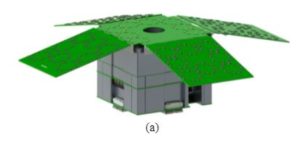
(a) Shown in full with optical receiver panels deployed.
DORA Payload 1u module
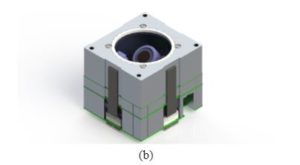
(b) Shown with receiver panels hidden. The actuated mirror for steering the transmitter laser is visible through the top face.
DORA Payload 1u module
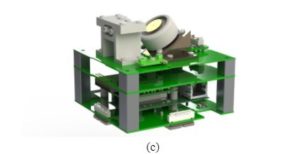
(c) Shown with panels and thermal shields hidden, revealing the analog and digital processing boards.
Rendering of full cubesat
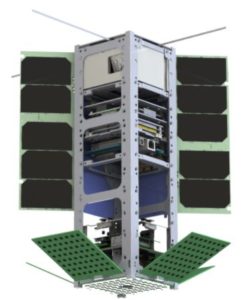
The DORA payload is at the bottom and shown with the aluminum shell hidden.
Optical Ground Terminal
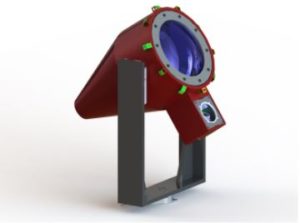
Unique optical transceiver, enabling high speed uplink and downlink with the DORA payload from the ground.
Transmitter and receiver terminals
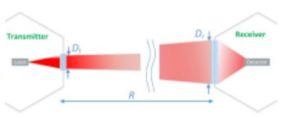
Image shows relevant parameters for DORA optical communications.
Publications
Papers, Posters, and Abstracts
- Talamante et al., Deployable Optical Receiver Array Cubesat, Proceedings of the Small Satellite Conference, SSC21-S1-35, 2021
- Hoffman et al., Creating Reliable Software Systems for the DORA CubeSat, Proceedings of the Small Satellite Conference, Technical Poster Session 6: Flight & Ground Software, 2021
- Jacobs et al., Plan for On-Orbit Demonstration of the Deployable Optical Receiver Array, 2022 IEEE Aerospace Conference, in review
- Escobar et al, Development of a Deployable Optical Receive Aperture, 2022 IEEE Aerospace Conference, in review
Memoranda
- DORA #001: Sources of background light for DORA cubesat and ground station, J. D. Bowman, October 8, 2020
- DORA #002: Jaime’s payload deployer hinge design testing, M. Horn, October 15, 2020
- DORA #003: RF payload 8-channel low resolution spectrometer calibration , Titu Samson, June 08, 2023
- DORA #003: Ethernet cable testing for 100Mbps link , Titu Samson, Sep 15, 2023
Meet the DORA Team

Danny Jacobs, PI
My name is Danny Jacobs and I lead the MHz Astronomy Division space astronomy group in the School of Earth and Space Exploration at Arizona State University.

Judd Bowman, CO-I
Judd Bowman is an experimental cosmologist interested in the formation of structure in the early universe, including the first stars, galaxies, and black holes. His current research focuses on the development and deployment of technologies and techniques to enable observational probes of the redshifted 21 cm line of neutral hydrogen gas during the epoch of reionization.

Mickey Horn
I am a Research Technician focusing on the systems engineering design of the spacecraft. I’m also currently developing the first version of the flatsat.

Uriel Escobar
I have a Masters degree in Electrical Engineering from the University of California Riverside and have an interest in optical communication. I worked on developing and integrating the optical receiver and transmitter for DORA.

Andy Klaib
Andy Klaib is an electrical engineer in the Advanced RF & Optical Technologies group at JPL. He specializes in digital logic design, embedded systems, and programming. He is responsible for the payload’s FPGA design and communications software.

Michelle Patterson
Michelle Patterson is a Master’s student in Industrial Engineering. She has a background in project management, process improvement and quality control. Michelle is currently working as a project manager for the DORA Cubesat team.
Sean Cornish
My Name is Sean Cornish. I was born in Joliet, Illinois and raised in Southern California. I earned a B.S. in Engineering Physics from Biola University, and am now a Senior at the University of Southern California, concurrently working towards my B.S. and M.S. in Astronautical Engineering. I work at NASA’s Jet Propulsion Laboratory as an Engineering Undergraduate Student, where I develop and test a variety of Electrical and Mechanical designs for RF and Optical communication technologies. I was fortunate enough to join the DORA team in August of 2020, and have been handling the mechanical design and deployment of the payload.
ASU Interplanetary Initiative Lab

Christopher McCormick
Christopher is an Electrical Engineering undergraduate student at Arizona State University who focuses on RF and embedded systems. He also is a Research Aide for the Interplanetary Initiative Lab and currently is developing the Radio Communication System for the DORA Cubesat as well as assists in the development of the Attitude Determination and Control System Testbed.

Matthew Adkins
Matthew is a graduate student working towards his masters in mechanical engineering. He currently works in the II Lab and plays a role in the development of test equipment for the DORA Cubesat project. Matthew is also conducting the thermal analysis of the DORA cubesat as part of his master program requirements. He is interested in space because he enjoys exploring unknown places and space is the ultimate unknown.
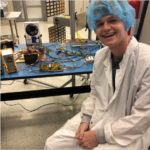
Chandler Hutchens
Junior in aerospace engineering (astronautics) working on the thermal vacuum design and testing for DORA cubesat at the Interplanetary Initiative Lab. Interested in satellite design and wants to be an astronaut!
DORA Alumni

Isabella All
My name is Isabella All, I am a third year undergraduate at ASU, majoring in Aerospace (Astronautical) Engineering. I am from Dayton, Ohio, and loving every minute in Arizona. I am a Student-Athlete, competing for ASU Swimming and Diving, and in Barrett, the Honors College. I was initially given the opportunity to join the Interplanetary Initiative Lab and work on this ADCS project for the DORA Mission in order to generate ideas for my Barrett Honors Thesis project. However, with the time I have invested thus far, I have gained more than just that. I have found more interest in small satellites and have hopes of building my professional career from this project, as well as building connections with the people I get to work with!

Parker Cohensitt
My name is Parker Cohensitt, and I am a senior at Arizona State University. I study Technological Leadership centered on space exploration. My interests include robotics, design, travelling, and astronomy. I have participated in a variety of projects including a data analyst for Nordita and the University of Iceland, to modify a codebase which studies information related to cosmic-ray data and gas emission line surveys. My most recent project was assisting in the design and layout of the solar simulator, a light source that represents the sun during testing, for the ADCS testbed of the DORA CubeSat project.
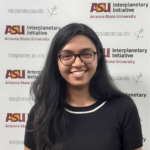
Amisha Patel
Computer Engineering graduate student at Arizona State University with concentration in embedded systems. I am a Research Aide (Student Worker) at Interplanetary Initiative Lab, currently working on development of testbed for Attitude Determination and Control System of DORA satellite.

Pawan Vijayanagar
I’m currently a senior pursuing mechanical engineering at Ira A. Fulton School of Engineering. I’m an active drone developer and I see my future in the UAS industry!
ASU Capstone Team
The capstone team is working to create prototype software systems for the DORA Cubesat. These software systems include both the flight software and the ground software. The goal is to develop a full ground-flight system that is as like-flight as possible for the time being. These software systems will lay the foundations for what will become the flight version of the respective systems.

Anish Katukam
Flight team member.
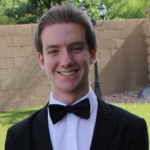
Justin Coylar
Flight team member.
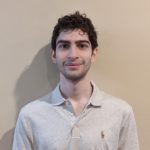
Jah Markabawi
Ground team member.

Khyati Raka
Ground team member.
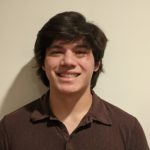
Evan Behrendt
Ground team member.